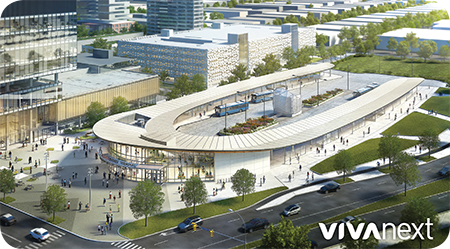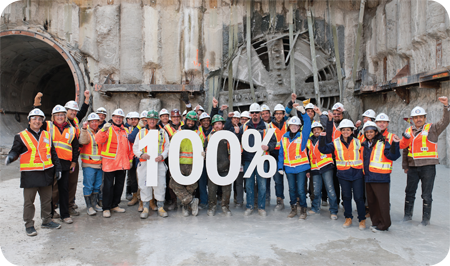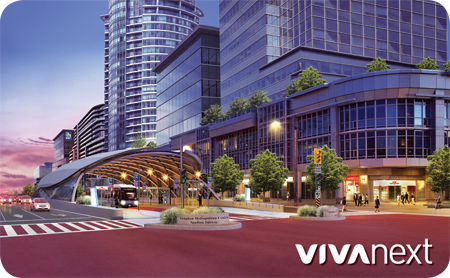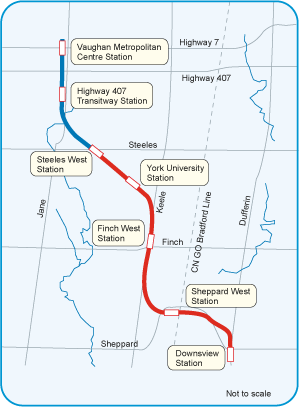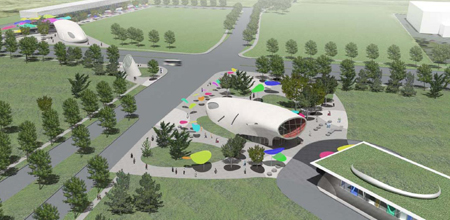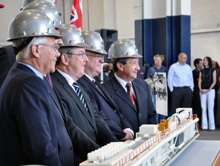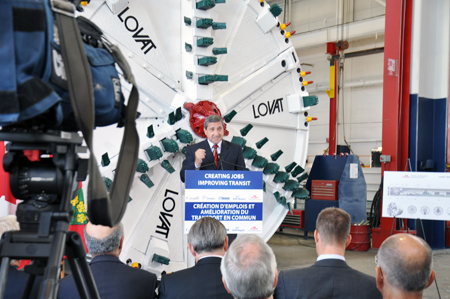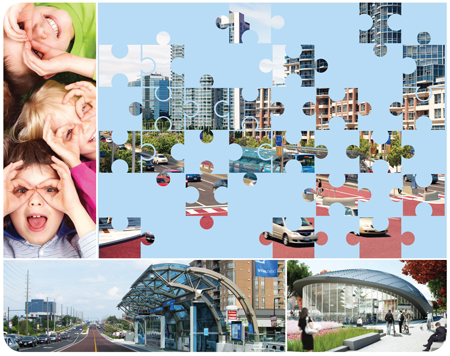
Over the next three years, the vivaNext system is really going to be taking shape, with rapidways on Highway 7 and Davis Drive opening for service, and the Toronto York Spadina Subway Extension [TYSSE] welcoming its first passengers. But these new transit options are only the beginning of expanding vivaNext network that’s being built for York Region commuters over the next few years.
Funding for the next priority series of rapidways is already lined up, and we hope to be confirming funding soon for a number of other high priority projects. Here’s the rundown on what’s planned, and how your transit choices are going to be widened over the next few years as vivaNext continues to expand.
Rapidway projects are being built in the order that will create the most connectivity for the greatest number of people and get you past the worst traffic congestion. Check out the map to see how the phases are rolling out.
The segments that are coloured pink on the map are what we’re currently building and include the rapidway on the East part of Highway 7, from Yonge Street to Warden Avenue, and the rapidway in Newmarket along Davis Drive from Yonge Street to Highway 404.
In the pink project bundle, we’re in the preliminary construction stages for a 36 km stretch of rapidway on Highway 7 West including a station at the Vaughan Metropolitan Centre [VMC]. This station and rapidway will be opening in time to connect viva passengers to the Spadina Subway Extension when it opens for service in 2016.
The blue projects run north on Yonge Street. We’re currently in the procurement phase for the first stage of two rapidway segments between Richmond Hill and Newmarket. One stretch will whisk passengers north from the Richmond Hill Centre up to 19th Ave / Gamble. The other stretch starts at Mulock Drive in Newmarket, and will connect to the new rapidway along Davis Drive. Construction of these rapidways is expected to be completed in 2017.
But that’s not all – look at the orange segments on the map. These segments are also all designed and funding is committed, with planning well underway for construction to start in 2015. Orange projects include two rapidway segments on Highway 7 West, which will extend on either side of the VMC rapidway. When it’s complete in 2018 this whole section will run over 15 km from Helen to Yonge Street. Another orange project will extend the Highway 7 East rapidway from the existing Warden Station on Enterprise Boulevard, to Unionville GO Station.
Other projects that will eventually create a full network across the Region and connecting to other transit systems are grey on the map. Since we don’t have funding secured for all of them yet we can’t confirm the actual timing.
Of these unfunded segments, two are the top priority. The first priority is the Yonge North Subway Extension, which will provide a critical link for passengers transferring between the vivaNext system and the TTC. Without this connection, vivaNext is missing a critical link that will really make our system a key part of the larger Greater Toronto transit network.
Another key priority is a rapidway along Major Mackenzie Drive, which would provide a major transit artery for all the growth taking place in that area. The Major Mackenzie rapidway would provide passengers with connections to the TYSSE, GO lines in both the east and west, and the viva Highway 7 rapidway in both the east and west.
Imagine how this wonderful rapid transit network would make your life easier? We are working hard to bring it to life, so that everyone in York Region will have the choice to leave their car at home and hop on board viva for a fast, reliable and comfortable ride, no matter where they want to go.

